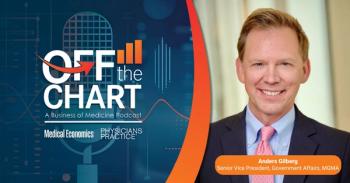
Patient Web Portals Offer Meaningful Use Benefits for Practices
If making patients happier and physicians’ lives easier isn’t enough reason to pique your interest in patient Web portals and PHRs, consider the fact that using both can help providers achieve meaningful use on several Stage One measures.
Web portals and personal health records have drummed up a lot of interest across the healthcare world, from large organizations to solo physician practices, and it’s easy to see why.
Personal health records, which are set up by patients, act as centralized repositories for all health information, from weight and BMI numbers to medication allergies and current prescriptions. Patient Web portals, which are set up by health organizations and practices, also serve as repositories for health information such as lab results, and can be used by patients to make appointments and pay bills, or by providers to send secure messages or post lab results.
Equally important, using PHRs and portals can help providers achieve five Stage One meaningful use measures.
For those who want to start using either or both, Denni McColm, CIO for Bolivar, Mo.-based Citizens Memorial Hospital, which oversees a number of smaller practices, offered an hour’s worth of advice to HIMSS 2011 show attendees during the Wednesday morning session “Meet Meaningful Use Through PHR Integration and Patient Web Portals.”
A couple of years ago, Citizens became one of the first rural health systems to integrate its database with Google Health and offer patients the option of receiving electronic information through a PHR, said McColm. Today, patients with Citizens Memorial Healthcare system who are hooked up to Google Health (so far the only PHR Citizens integrates its data with, though Citizens will soon integrate with Microsoft’s PHR) are able to access detailed information electronically by sending a simple request to their provider.
For patients hooked up to Citizens’ patient Web portal, which also launched recently, information may be transmitted electronically and accessed through online Web browsers.
“The patient portal is tethered and it does transactions,” said McColm. “We tell patients it’s comparable to online banking. The PHR, it’s like using Quicken. Patients can combine information from multiple sources.”
One of the most obvious benefits to having a PHR is that if a patient is in an emergency situation and needs to relay information to a doctor quickly, all he or she has to do is give the doctor an account name and password to access the information. PHRs can include information culled from several unrelated health organizations.
However, this benefit can also be a drawback, say, if a patient starts or stops taking a medication without letting his physician know, McColm noted.
Patients have also expressed concern over the use and transmission of sensitive information, such as lab results, through the health information exchange. McColm said her organization’s providers have addressed this by following a policy where they won’t release sensitive lab results (such as HIV test results) electronically before contacting patients by phone or talking to them in person.
But for the most part, patients are pleased with the new technology options, McColm said.
“The most common e-mail I get from patients is ‘I signed up for Google Health and it is so cool.’”
Marisa Torrieri is associate editor at Physicians Practice. She can be reached at
Check out all our coverage of the HIMSS 2011 conference
Newsletter
Optimize your practice with the Physicians Practice newsletter, offering management pearls, leadership tips, and business strategies tailored for practice administrators and physicians of any specialty.









